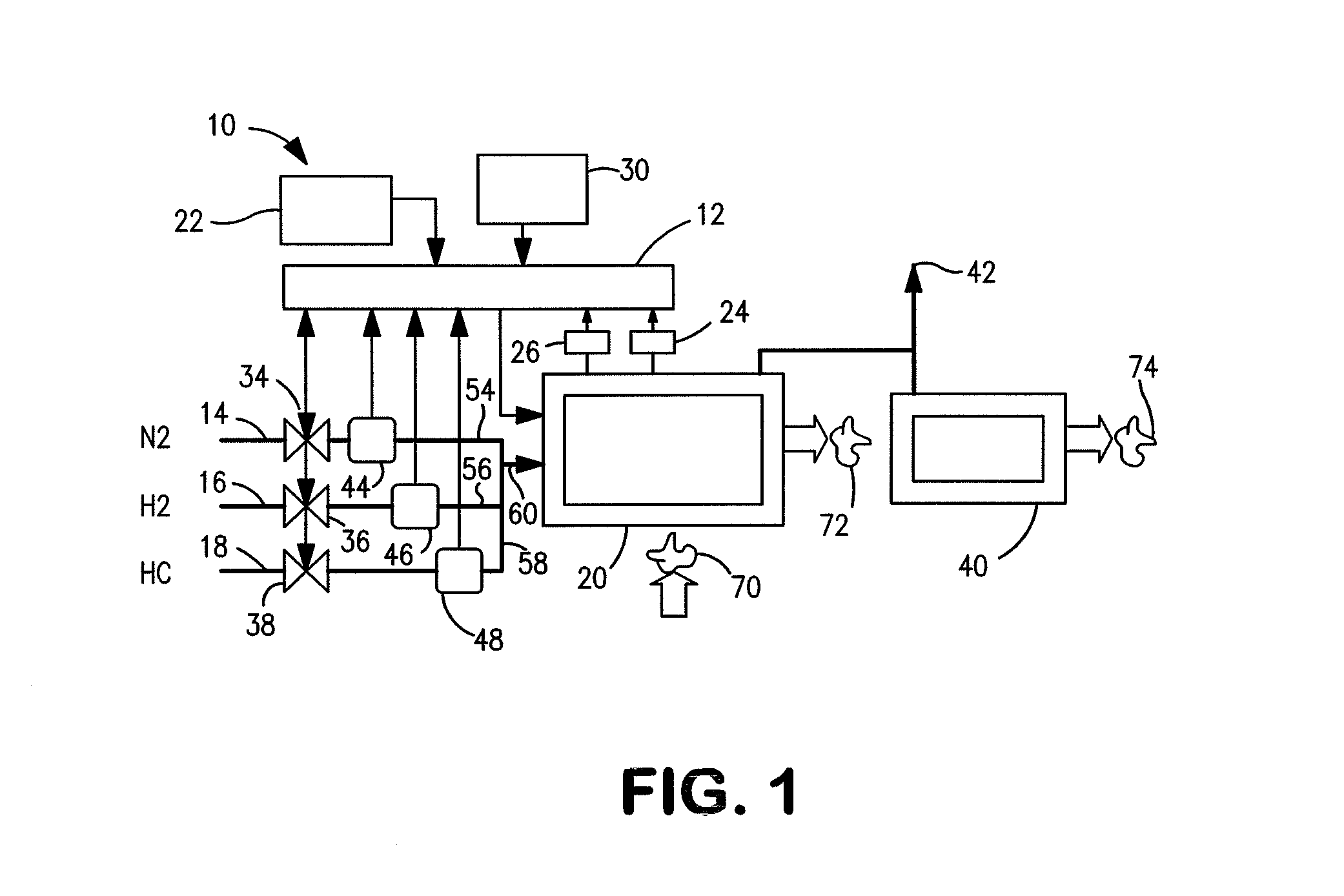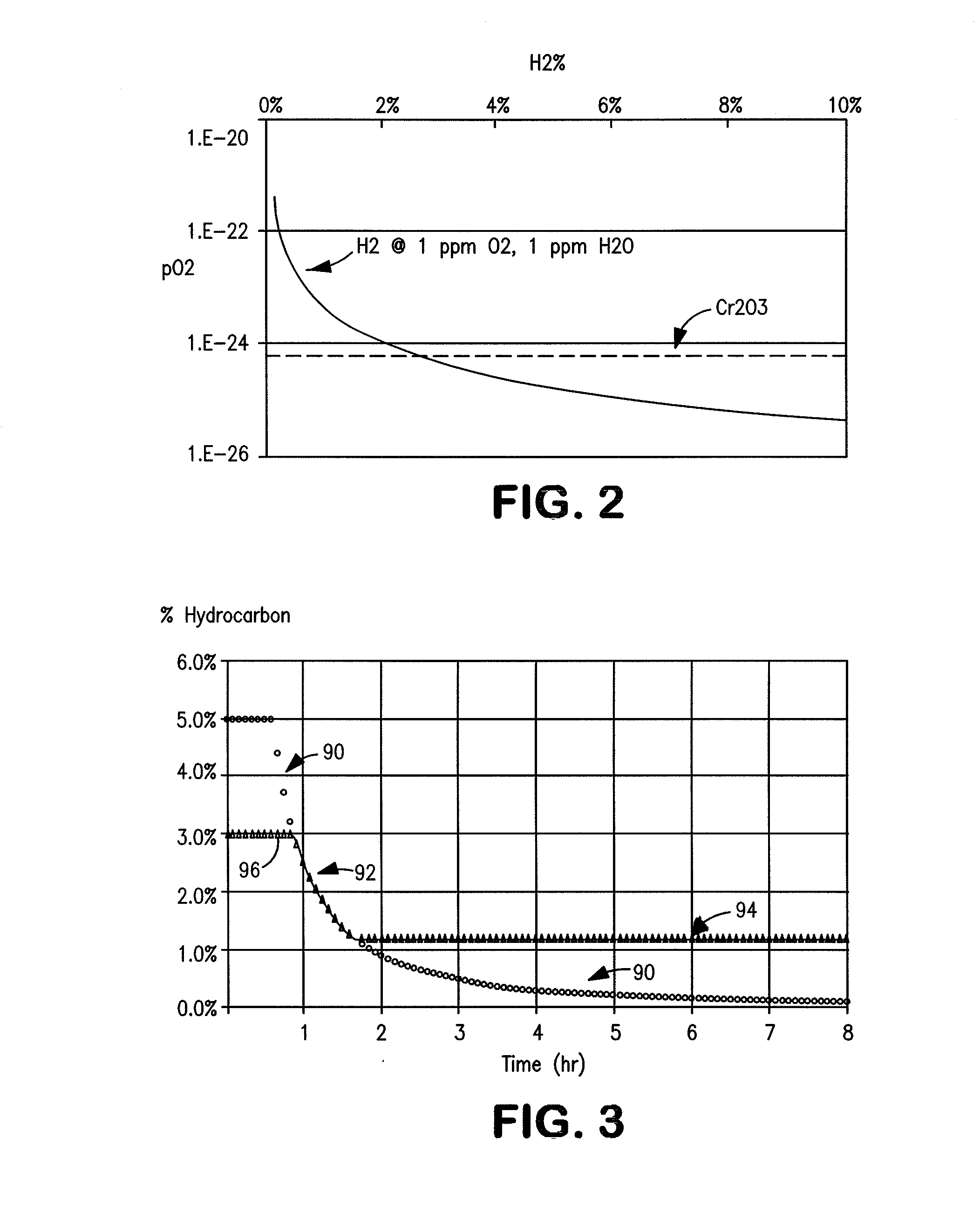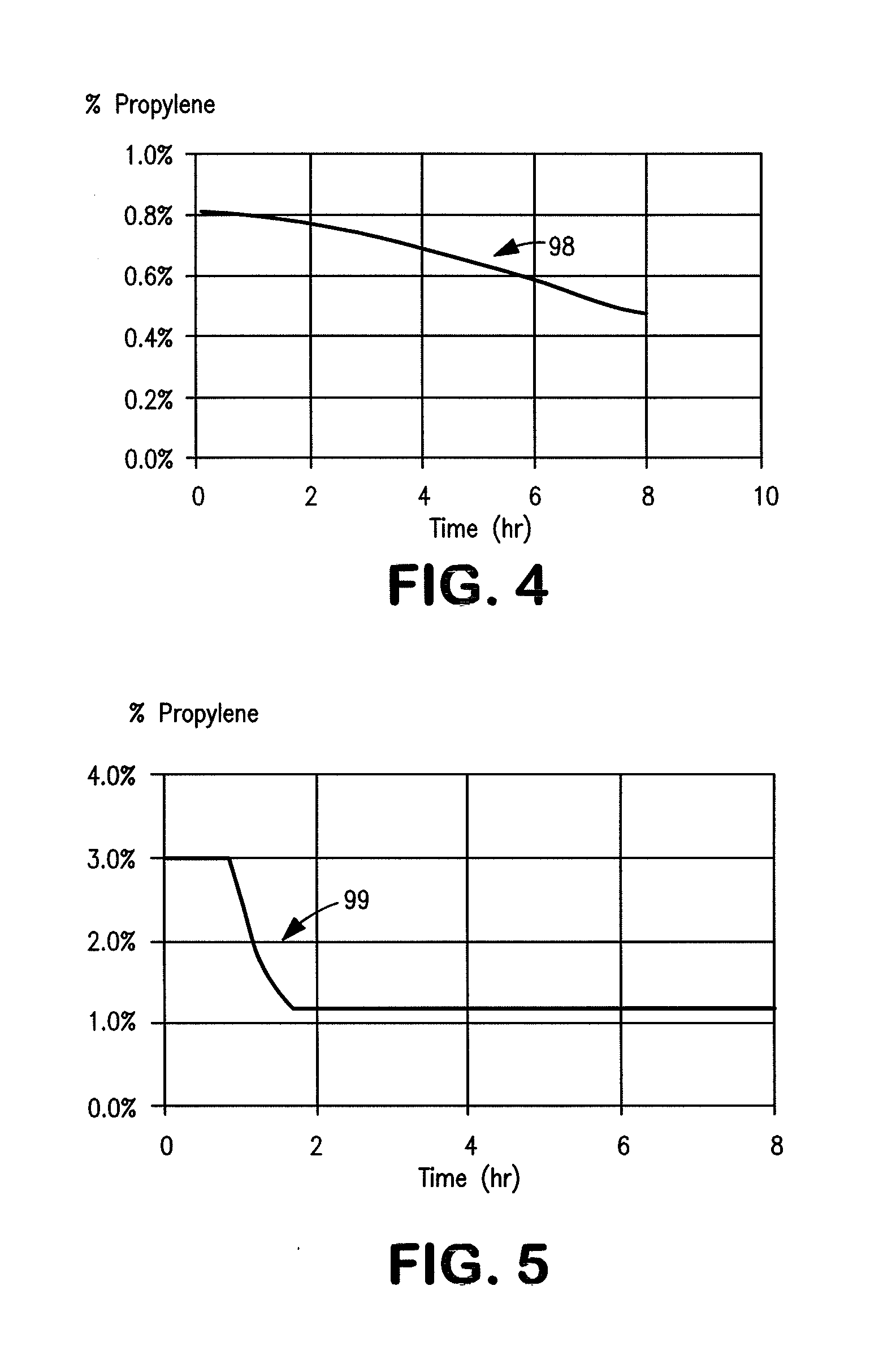Method for oxygen free carburization in atmospheric pressure furnaces
a technology of oxygen-free carburization and atmospheric pressure furnace, which is applied in the direction of solid-state diffusion coating, metal material coating process, coating, etc., can solve the problems of additional safety risks, difficult to generate and precisely control endo-gas atmospheres, and high cost of operation
- Summary
- Abstract
- Description
- Claims
- Application Information
AI Technical Summary
Benefits of technology
Problems solved by technology
Method used
Image
Examples
example 1
[0065]This example involved the carburization of a piece of ¾″×2″ SAE 9310 steel alloy rod to a desired effective case depth of about 0.050 inches using the oxygen-free carburization model. A nitrogen atmosphere containing 0.6% propylene and 5.0% hydrogen was equilibrated in a laboratory tube furnace atmosphere at about 1700 degrees F. until the O2 concentration stabilized. The carbon uptake in the tube furnace was empirically determined to be about 1.0% based on a SAE 1010 shim sample (0.001″ thick) placed in the furnace and contacted with the oxygen-free gas atmosphere for about 15 minutes.
[0066]The relevant process inputs were entered into the oxygen-free carburization model and a desired hydrocarbon gas concentration profile as a function of time was established to achieve the desired effective case depth. The hydrocarbon gas concentration profile 98 used is depicted in FIG. 4. Hydrogen gas concentration during the carburization process was maintained at about 5.0%. The sample w...
example 2
[0068]This example involved the carburization of a SAE 4140 steel alloy sample to a desired effective case depth of about 0.047 inches in an operating atmosphere pressure carburization furnace using the oxygen-free carburization model. A nitrogen, propylene and hydrogen gas atmosphere was equilibrated in an operating atmosphere pressure carburization furnace at about 1700 degrees F. until the O2 concentration stabilized.
[0069]The relevant process inputs were entered into the oxygen-free carburization model and a desired hydrocarbon gas concentration profile as a function of time was established to achieve the desired effective case depth. The upper hydrocarbon limit was constrained by the hydrocarbon injection equipment. The hydrocarbon gas concentration profile 99 used is depicted in FIG. 5. Hydrogen gas concentration during the carburization process was maintained between about 1.19% and about 2.99%. The sample was placed in a loading vestibule and purged with nitrogen to remove r...
examples 3 and 4
[0071]These examples involved the carburization of a SAE 9310 steel alloy sample (Example 3) and a SAE 4820 steel alloy sample (Example 4) to desired effective case depths of about 0.034 inches in an operating atmosphere pressure carburization furnace using the oxygen-free carburization environment but keeping the hydrocarbon gas profile constant as a function of time. A nitrogen atmosphere containing about 1.7% propylene and 5.0% hydrogen was equilibrated in an operating atmosphere pressure carburization furnace at about 1700 degrees F. until the O2 concentration stabilized.
[0072]As with the earlier described examples, the samples were placed in a loading vestibule and purged with nitrogen to remove residual oxygen. The samples were then introduced to the furnace atmosphere at about 1700 degrees F. and allowed to come to temperature. The propylene gas flow and hydrogen gas flows were then introduced into the furnace. The hydrocarbon gas concentration profile was kept constant at ab...
PUM
| Property | Measurement | Unit |
|---|---|---|
| temperature | aaaaa | aaaaa |
| depth | aaaaa | aaaaa |
| pressure | aaaaa | aaaaa |
Abstract
Description
Claims
Application Information
 Login to View More
Login to View More - R&D
- Intellectual Property
- Life Sciences
- Materials
- Tech Scout
- Unparalleled Data Quality
- Higher Quality Content
- 60% Fewer Hallucinations
Browse by: Latest US Patents, China's latest patents, Technical Efficacy Thesaurus, Application Domain, Technology Topic, Popular Technical Reports.
© 2025 PatSnap. All rights reserved.Legal|Privacy policy|Modern Slavery Act Transparency Statement|Sitemap|About US| Contact US: help@patsnap.com



